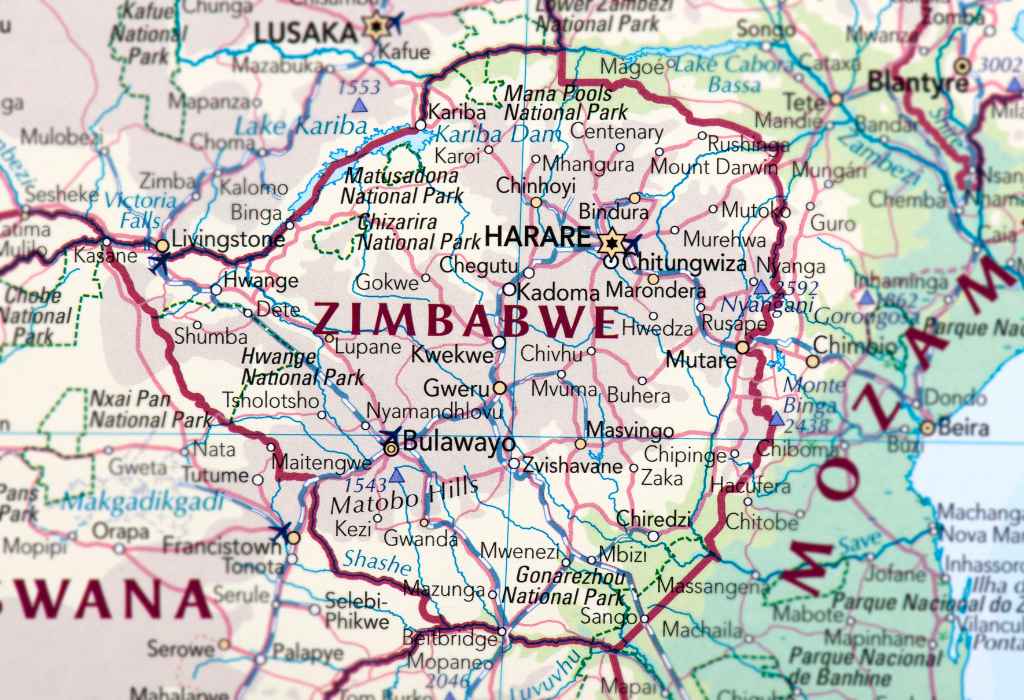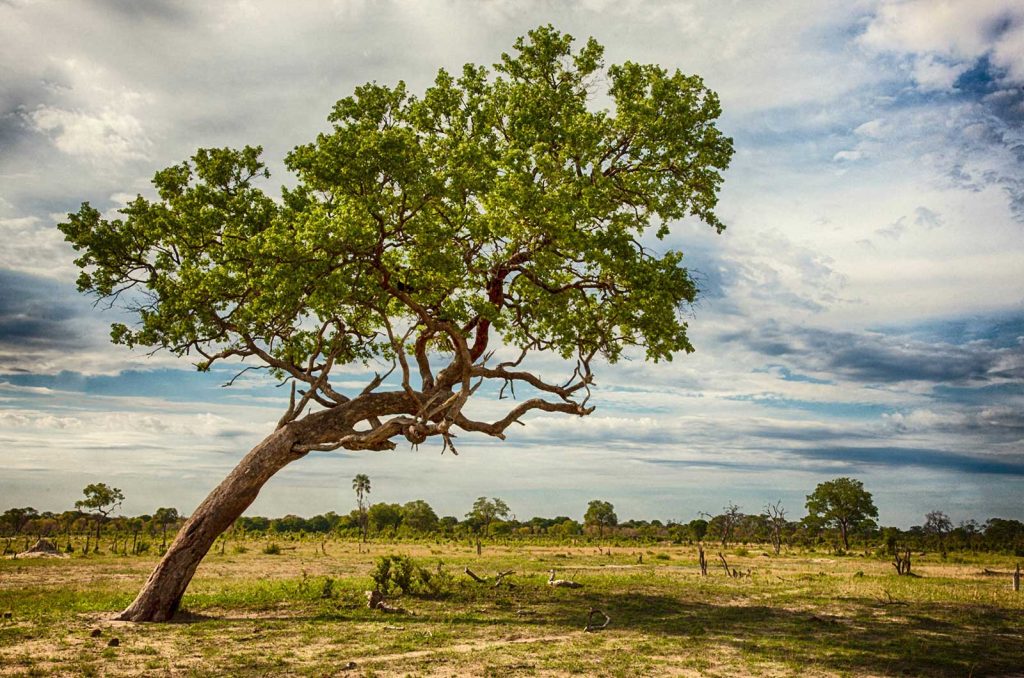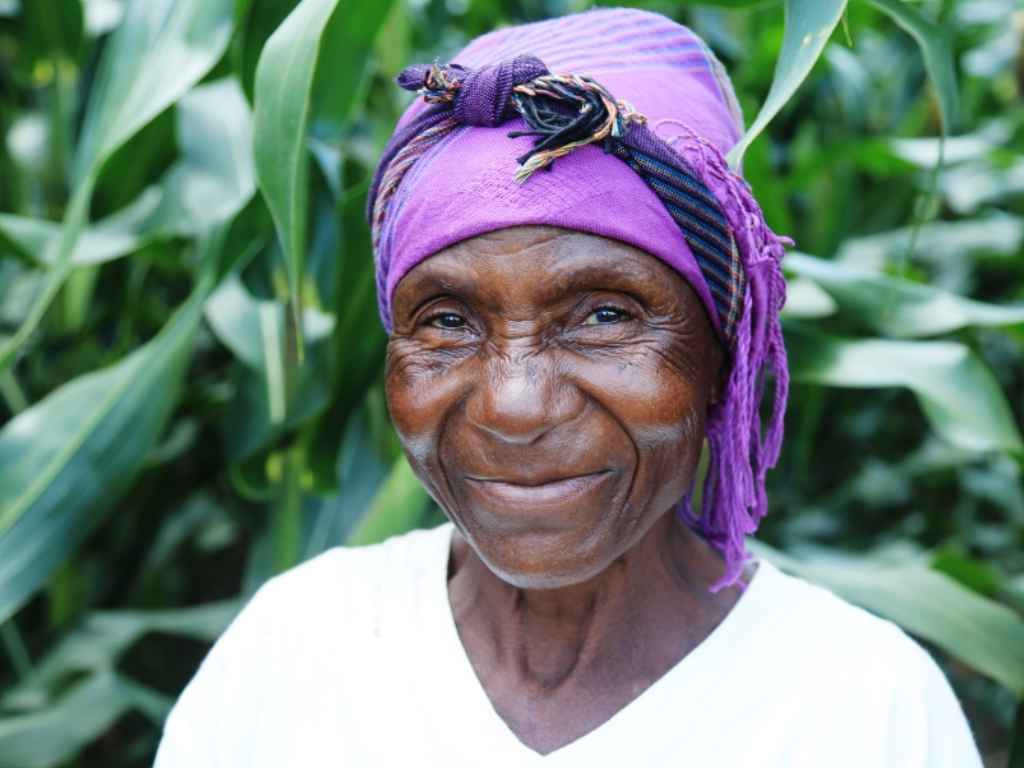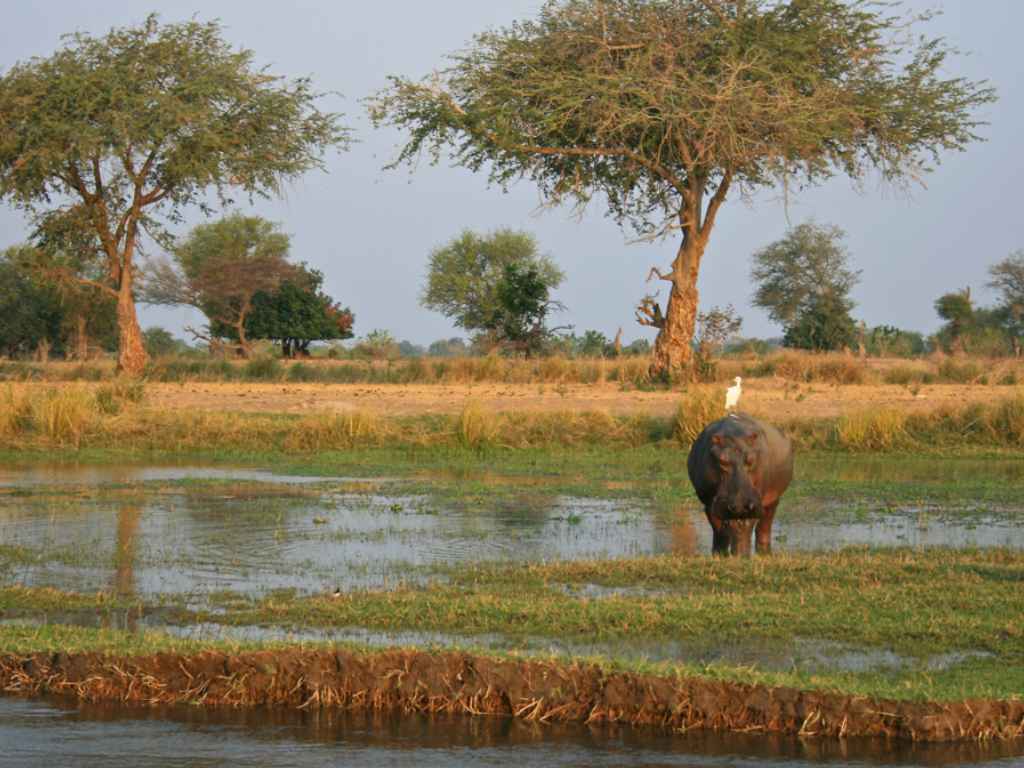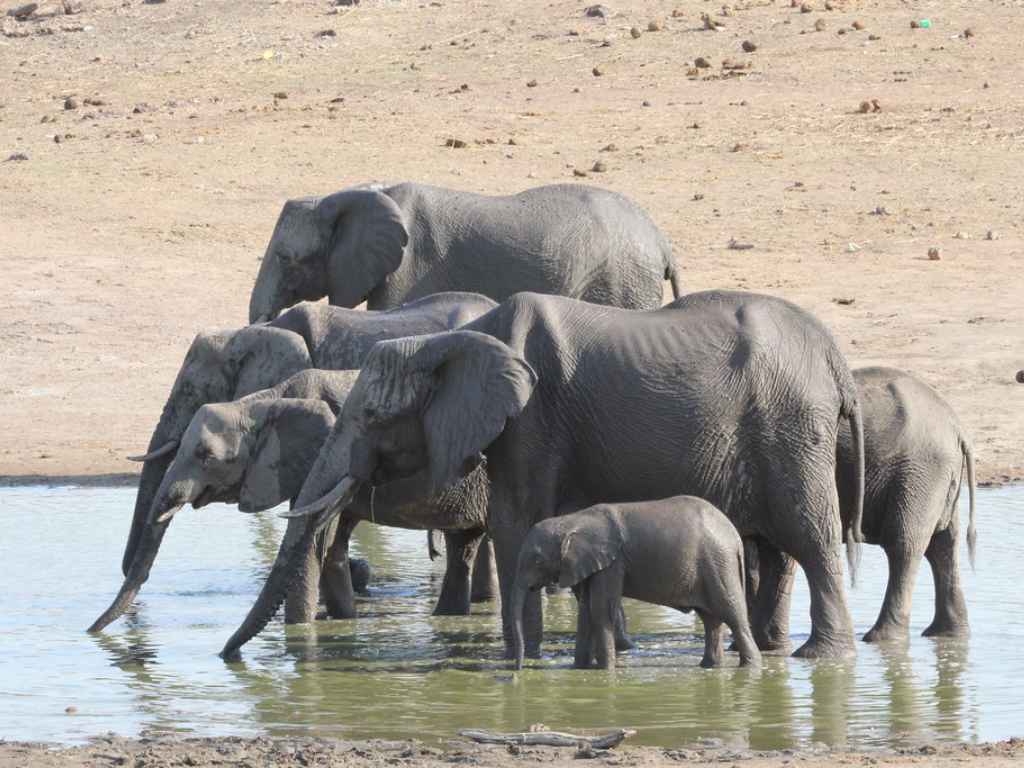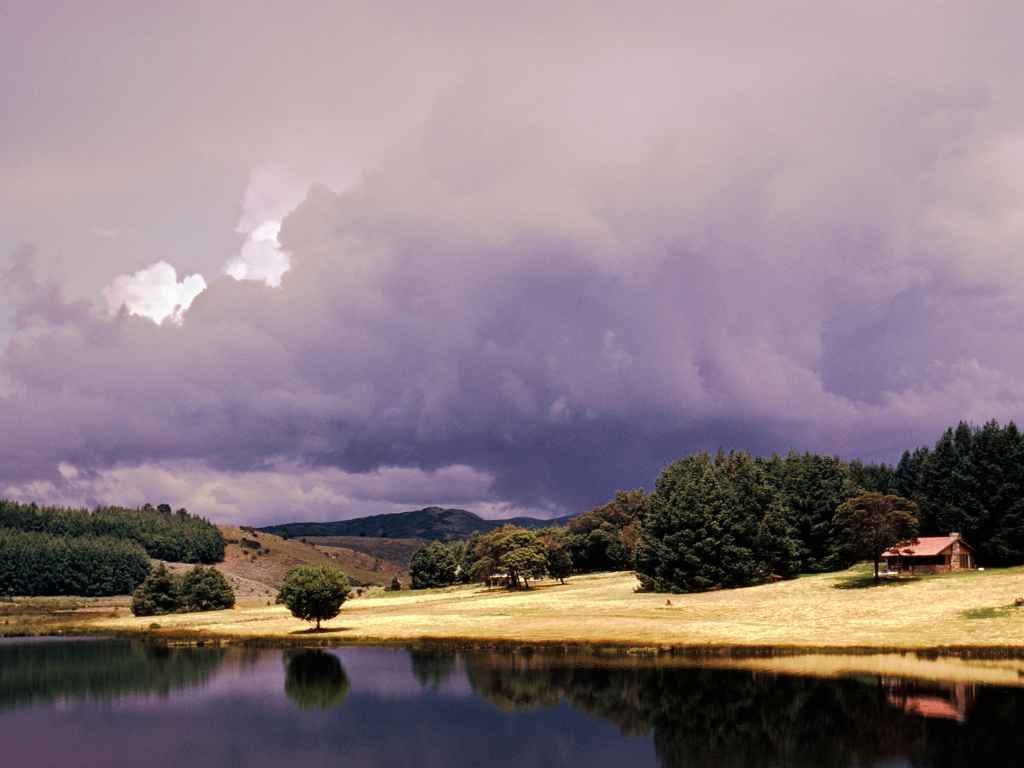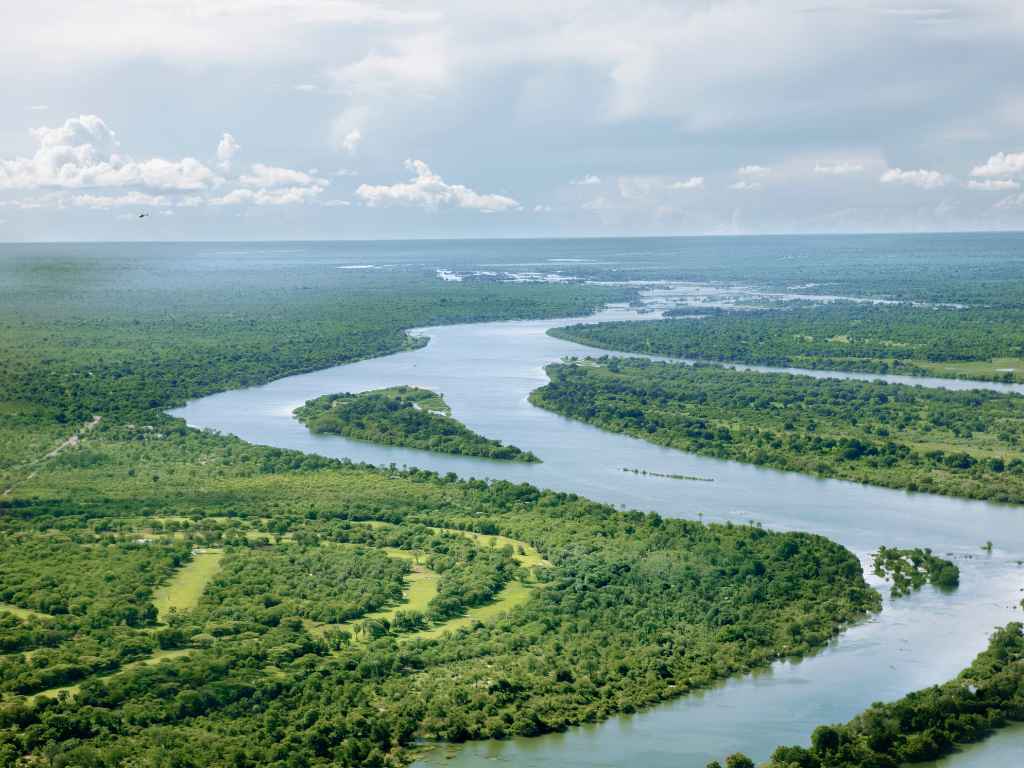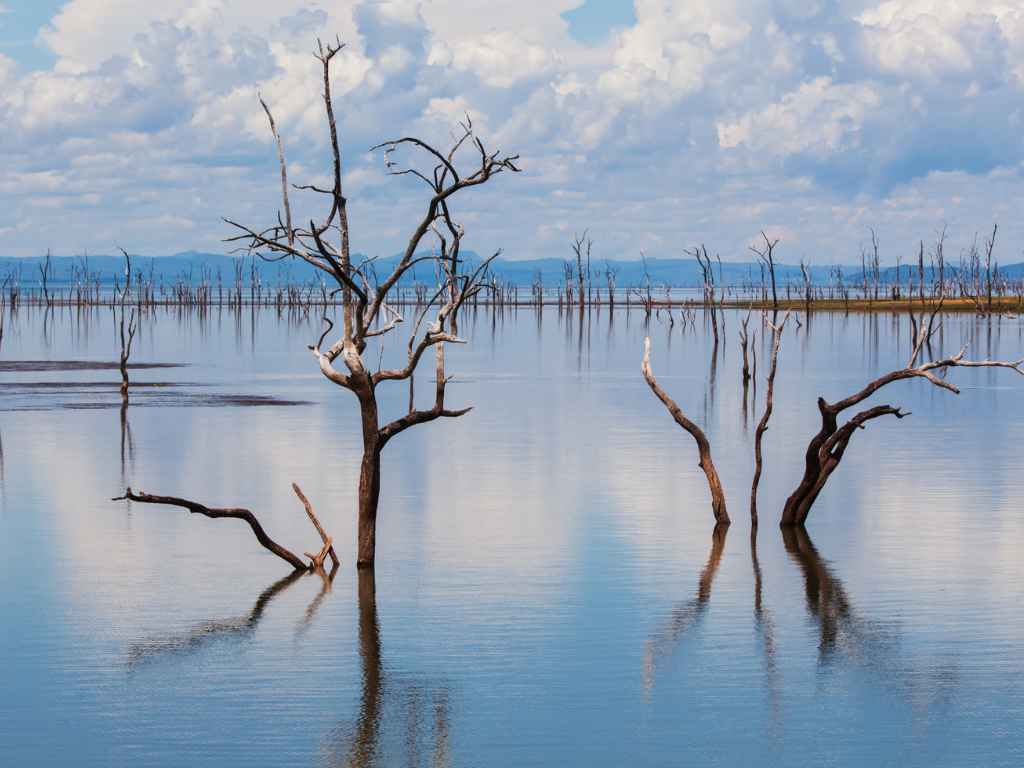Immerse yourself in the heart of Southern Africa as we embark on an enchanting journey through Bulawayo, Zimbabwe’s second-largest city. Known for its rich history, vibrant culture, and breathtaking landscapes, Bulawayo offers a unique blend of experiences that’ll leave you yearning for more.
In this guide, we’ll be your compass, leading you through the city’s bustling streets, historical sites, and hidden gems. Whether you’re a seasoned traveller or a first-time visitor, we’ve got you covered. So buckle up, as we set off on an unforgettable adventure through the city of kings, Bulawayo.
Welcome to Bulawayo
Delving further into our expedition to Bulawayo, we extend our discourse to the city’s intriguing aspects such as population, location, selling points, and climatic conditions, among others.
About Bulawayo
A remarkable destination, Bulawayo’s allure lies not only in her historical significance, rather extends to the urban landscapes, pulsating streets, and captivating culture.
Location and Population
Situated in the south-western region of Zimbabwe, Bulawayo grabs a noteworthy spot on the demographic charts—being the second-largest city. The population, which nests around 653,337 residents (as per Zimbabwe National Statistics reports of 2019), exhibits a beautifully interwoven tapestry of diverse tribes and customs.

Highlights and Selling Points
When exploring Bulawayo, forgetting the city’s Ndebele art, an indigenous art form, would be a sin. This art form, splashed across buildings and homes, gives the city a vibrant, one-of-a-kind aesthetic. Furthermore, Bulawayo’s landmark—the Matobo National Park, acclaimed by UNESCO as a World Heritage Site, conceals numerous tucked-away gems. From rock painting galleries dating back thousands of years to granite kopjes (rocky outcrops) and mysterious caves—it’s a treasure trove for historians and nature lovers alike.
Getting to Bulawayo
Geographically blessed, Bulawayo is accessible by road, rail, and air, depending on your origin, budget, and preferred mode of transportation. For those who fly, the laid-back Joshua Mqabuko Nkomo International Airport connects the city with major airlines and worldwide destinations, ensuring a smooth transition into your adventure.
Top attractions/things to do
Venturing into Bulawayo, tourists find themselves immersed in a plethora of attractions that cater to diverse interests. From historical landmarks to cultural treasure chests and natural highlights, this section introduces some of Bulawayo’s winning points.
Major Sights and Landmarks
Natural History Museum
The Natural History Museum, an alluring spot, presents Zimbabwe’s fauna, geology, paleontology and anthropology. Tourists find delight in the varied dinosaur exhibits, mammal displays, and detailed collections of Zimbabwe’s minerals.

Bulawayo Railway Museum
Trains enthusiasts, frequent Bulawayo Railway Museum. It exhibits vintage trains, including Cecil Rhodes’s personal railway carriage. It’s a journey through time that illustrates Zimbabwe’s railway history.
City Hall and Tower
An architectural masterpiece, the City Hall and its Clock Tower, provides a panoramic view of the city. Its grandeur is noticeable in the British-designed colonial style architecture.
Centenary Park
Centenary Park, brimming with verdant landscapes and serene ambience, serves as an oasis of tranquility in Bulawayo. A historic park stretching over 90 acres, it houses landmarks like the statue of Cecile Rhodes.
Museums and Cultural Attractions
National Museums and Monuments of Zimbabwe
The National Museums and Monuments of Zimbabwe details the heritage of the nation. Visitors comprehend the prehistoric life and the nation’s liberation struggle.
Bulawayo Art Gallery
Fostering Zimbabwe’s artistic heritage, the Bulawayo Art Gallery reveals enchanting paintings and sculptures. It’s a sanctuary for art lovers who relish in engaging with contemporary and traditional Zimbabwean art.
Bulawayo Theatre Club
The Bulawayo Theatre Club, a vibrant hub, materializes cultural experiences through dance, drama and music performances. A leading venue for theatrical productions, it nourishes the cultural heart of Bulawayo.
Outdoor Activities and Parks
Hillside Dams Conservancy
The Hillside Dams Conservancy, a restful retreat, invites nature lovers to bask in its varied bird species and native flora. Activities such as picnics, barbecues, and fishing pander to visitors’ outdoor pursuits.
Matobo National Park
Matobo National Park, a UNESCO World Heritage Site, fascinates visitors with its unique rock formations, rich biodiversity and ancient rock art sites. It holds the largest concentration of black and white rhinoceros in Africa.
Khami Ruins
The Khami Ruins, a symbol of the ancient Kingdom of Butua, amazes explorers with its terraced platforms and decorated walls. It’s a compelling reflection of the country’s architectural prowess and historical depth.
Best areas to stay and accommodation options
Let’s delve into the best areas to stay and an array of accommodation options in Bulawayo, providing useful and relevant information for your planning.
City Centre Hotels
City centre serves as a perfect base, offering comfortable and luxurious hotels. Here, visitors find themselves immersed in the hustle of city life. Holiday Inn Bulawayo, an internationally renowned brand, Nest Hotel, renowned for its sophisticated ambiance, and The Nesbitt Castle, a boutique hotel that doubles as a historical monument, are among the prominent places to consider.
Suburbs
If you prefer a quieter area, you can opt for the suburbs. They are typically divided into the North and South suburbs.
Suburbs North (Burnside, Hillside)
Notable for their tranquil environment, the northern suburbs of Burnside and Hillside offer a host of comfortable lodging options like homestays and boutique hotels. The Granite Park Lodges in Burnside, with its splendid views and serene surroundings, makes for a compelling option.
Suburbs South (Malindela, Parklands)
For a blend of local suburban life and easy access to amenities, the southern suburbs of Malindela and Parklands are desirable. Ebony & Ivory Guesthouse in Malindela and Stay Afrique Hotel in Parklands would cater to your needs rather impressively.
Boutique Hotels and Lodges
Bulawayo boasts numerous boutique hotels and lodges that cater to varying tastes. For a luxurious stay, we recommend The Nesbitt Castle for its unique medieval design and upmarket furnishings. Other options like Musketeers Lodge, with a lush garden setting, and High Mount Lodge, known for its fantastic city views, also come highly recommended.
Vacation Rentals and Airbnbs
For those who prefer self-catering options, vacation rentals and Airbnbs abound in Bulawayo. This option provides a home-like ambience whilst ensuring privacy and flexibility. Noteworthy options include places like Bulawayo Beautiful Homes and Clarke Cottage, both known for their modern facilities and comfortable spaces.
In essence, Bulawayo offers a range of lodgings, from city centre convenience to tranquil suburbs, from boutique hotels to self-catering options. The choice largely depends on your preference, ensuring that your stay in the city is as enjoyable and comfortable as possible.
Getting around/transportation tips
The succeeding paragraphs present practical tips on the several transportation options available in Bulawayo, after our comprehensive exploration of accommodation options in the city.
Public Transportation
Bulawayo boasts an extensive and affordable public transport system, consisting of both government-run and private transportation. Primarily, these consist of large buses, combis (minibuses) and emergency taxis, traditionally known as Kombis. Amid the local populace, ZUPCO buses and Kombis are general favorites, attributable considerably to affordable fares that ensure regular transport despite the modest limitations of their timetables.
Taxis and Ride-hailing
In contrast, our travels revealed that metered taxis, also widely available, proved the go-to option for convenience and flexibility, available at any hour. Comparable to international ride-hailing services, these taxis provide point-to-point transportation without shared rides. However, we found that the rates, while affordable, well surpassed those of public transport. For those familiar with using digital platforms, ridesharing apps such as Hwindi are available, offering a highly convenient taxi-like service at a relatively lower price.
Renting a Car
Opting for car rentals provides the incomparable independence of having your own set of wheels, ideal for solo adventurers, couples, or small families. Various rental agencies are present, choose a well-known one e.g., Europcar, to guarantee a reliable service. Familiarise yourself with Zimbabwe’s road rules and the state of local streets before embarking on your journey. Notably, the roads in Bulawayo are wider and generally less congested than in other Zimbabwean cities.
Tours and Guides
Last, we address the charm of guided city tours, one can take advantage of the specialized service offered by several tour companies or community-based tourism organizations. Notably, companies like Black Rhino Safaris and Vayeni offer bespoke experiences, from city landmarks to exciting wildlife safaris. Contrastingly, organisations like Amagugu International Heritage Centre offer community-based tourism experiences, enabling tourists to better grasp the region’s rich cultural heritage.
Cuisine/food & drink scene
Let’s shift our focus from the vibrant streets and inviting accommodations of Bulawayo to its enticing cuisine. Bulawayo boasts a lively food and drink scene speckled with a mélange of traditional Zimbabwean and Ndebele dishes, bustling local markets brimming with street food, vibrant restaurants, and nightlife that presents luscious local drinks and operates with effervescence.
Traditional Zimbabwean/Ndebele Cuisine
Broadening your gastronomic horizon, Bulawayo’s cuisine presents a delightful experience. Traditional dishes, steeped in rich Zimbabwean and Ndebele culture, anchor the city’s culinary scene. Sadza, the pulse of Zimbabwean cooking, features prominently in local meals. This thickened porridge, commonly made from ground cornmeal, pairs with relishes, such as greens, meat, or dried fish. This is not just food, it’s a cultural handshake. Additionally, Biltong, cured, and dried meat, is another delicacy firmly rooted in indigenous tradition.
Local Markets and Street Food
Street food and local markets are the lifeblood of Bulawayo’s food scene, offering a treasure trove of flavours. Centenary Park Flea Market and City Hall Park are ideal places to treat your tastebuds with their plethora of food stalls. They offer an exciting assortment of delicacies, such as Rooster brood, vetkoek (fried dough), and Boerewors (farmers sausage). Each journey through these stalls is not just a meal, but an adventure.
Restaurants and Nightlife
Fine-dining or casual restaurants, Bulawayo’s vibrant food sector culminates in eateries that match every taste and budget. You can feast on exquisite international cuisines, inspired fusion dishes, or humble comfort food in venues like 26 on Park and The Cattleman Steakhouse. These restaurants, with their captivating ambiances, often also serve as sentinels of Bulawayo’s electric nightlife, offering live music, dancing, and performances that go on well into the night.
Breweries and Local Drinks
Quenching your thirst with local brews contributes to the quintessential Bulawayo experience. Breweries like the Bulawayo Lager offer traditional beers that translate Zimbabwe’s rich fermentation tradition into every drop. On the non-alcoholic side, Mazoe Orange Crush, a renowned Zimbabwean soft drink, is a must-try. Traditional brews like Chibuku, a sorghum beer, also weave into the city’s drinking culture, signifying Bulawayo’s embedded roots in age-old customs.
Culture & History
Delving further into our exploration of Bulawayo brings us to the city’s rich culture and history. From colonial influences to Ndebele traditions, noteworthy art, and festive events, Bulawayo offers a melange of cultural highlights, ensuring an immersive journey back in time.
Colonial History
Colonial history plays a prominent role in shaping Bulawayo’s cultural landscape. The city, founded in 1840 by the King of the Ndebele, Lobengula, became a hub for European settlers during the late 19th century. The city’s architecture tells tales of this era, with many structures reflecting Victorian and Edwardian styles. Telling examples include the Bulawayo Club and the Natural History Museum, both offering an exquisite display of the city’s diverse architectural treasure.
Ndebele Culture
Culture lovers will find Ndebele heritage intriguing. This minority group’s traditions, demonstrated through art, music, and dance, are integral to the city’s cultural fabric. Vibrantly patterned Ndebele houses and traditional attire provide a unique visual experience, affirming the people’s strong attachment to their heritage. Examples of this can be seen at the Mzilikazi Arts and Crafts Centre and the Amakhosi Cultural Centre, particularly in their offerings of Ndebele beadwork pieces.
Arts and Crafts
Bulawayo prides itself on its thriving arts scene. Over time, it has become a crucible for artistic talent, teeming with art galleries, workshops, and craft markets. Breathing life into Bulawayo’s art scene are its local talents, creating artworks that echo Zimbabwe’s cultural heritage, natural beauty, and contemporary life. Visit the National Gallery of Zimbabwe in Bulawayo to witness firsthand the city’s creative prowess.
Festivals and Events
Last but not least, Bulawayo’s festive spirit sets it apart. The city hosts a myriad of festivals and events that attract both locals and visitors alike. These events are a tribute to music, dance, visual art, film, and even fashion. Each year, the Intwasa Arts Festival KoBulawayo and the Bulawayo Music Festival create a rhythmic reverberation, fostering a sense of unity and shared cultural pride. With such vibrant and diverse offerings, it’s no surprise that Bulawayo is often referred to as Zimbabwe’s Cultural Capital.
Practical tips
Let’s delve into some practical tips that can greatly enhance your trip to Bulawayo, Zimbabwe’s Cultural Capital.
Best Times to Visit
Bulawayo experiences a semi-arid climate. The winters, running from May to September, offer clear skies and mild temperatures averaging between 7 and 23 degrees Celsius. On the other hand, summer, taking place from October to April, can be quite hot and is marked by regular rainfall. Therefore, for pleasant weather and outdoor exploration, the wisest choice is the winter months of May through September.
What to Pack and Wear
Given the city’s mild winter and hot summer, packing suitable clothes becomes crucial. For winters, it’s advisable to include light jackets, sweaters and long pants. As the summer can be hot during the day, light clothing like loose t-shirts, and comfortable shorts or skirts, is apt. Regardless of the time of the year, a good pair of walking shoes is a must for exploring the city and its attractions.
Language Tips
Although English is the official language in Zimbabwe, a few phrases in Ndebele, mainly spoken in Bulawayo, can break the ice with locals and enrich your travel experience. They appreciate attempts at their language, and phrases like “Sanibonani” (Hello to many people), “Ngicabanga ukuthi” (I think that), or “Ngibonga kakhulu” (Thank you very much) can help build connections with the locals.
Tipping Culture
In Bulawayo, tipping isn’t mandatory but certainly appreciated, especially in the service industry. Restaurants don’t add a service charge, so if you’re happy with the service, a tip of around 10% is the norm. For other services such as taxis, guides, and hotel staff, rounding up the bill or giving spare change can be an appropriate gesture. Remember, in Zimbabwe cash is preferred for tips, particularly in the local currency, Zimbabwean dollars.
Unique experiences and hidden gems
In this part of our travel guide, you’ll discover unexplored corners and hidden gems of Bulawayo. We’ll delve into off-the-beaten-path attractions, suggested day trips, and unique tours that offer authentic experiences.
Off-the-Beaten-Path Attractions
Delight in our selection of lesser-known sites. Absorb unique perspectives by visiting the Nesbitt Castle. A preserved heritage site, it’s a glimpse into Bulawayo’s colonial past with the added bonus of an art gallery and restaurant. Explore the Natural History Museum, it houses not only local but also African exhibits, a testament to the city’s rich biodiversity.
Marvel at the Murals of Makokoba, epitomising the cultural depth, where every wall is a canvas displaying the locals’ creativity. Lastly, remoteness defines Chipangali Wildlife Orphanage. It offers a haven for endangered and injured wildlife, contributing to conservation efforts.
Day Trips from Bulawayo
Outside Bulawayo city boundaries, exciting adventures await. Matobo National Park qualifies as priority one for day trips. Highlights of this UNESCO World Heritage Site include ancient San rock paintings and an impressive array of wildlife, emphasising white rhinoceros encounters.
Khami Ruins, another World Heritage Site, is an archaeological marvel, a remnant of the great Rozwi Empire. Barely an hour’s drive from Bulawayo, it offers a historical expedition unlike any other. Our third recommendation is Antelope Park. With walking with lions, elephant interactions, and horse safaris, it promises a unique African experience.
Unique Tours and Activities
To truly imbibe the aura of Bulawayo, we recommend unique, bespoke experiences. Enlist for a graffiti walking tour to fully comprehend the Makokoba murals. Participate in the cooking class for a quintessential Zimbabwean meal, an insight into the local cuisine. Opt for ‘adopt an orphan’, a program at Chipangali Wildlife Orphanage, and contribute to wildlife conservation in your own small way.
We have 100s of unique tours and activities that include Bulawayo. Most can be booked online in a few clicks.
Bulawayo unravels its unique charm when you are willing to step off the typical tourist trail. It’s these exclusive encounters that’ll transform your trip from ordinary to extraordinary, imprinting in your memory an indelible travel story.
Sample costs and budgeting
For an insightful journey through Bulawayo, here’s a practical guide to how much you might need to budget for.
Accommodation Costs
Accommodation in Bulawayo offers options to suit every budget. For budget-conscious travellers, hostels provide beds for as low as £10 per night. About 3-star hotels, they typically charge between £25-£35 per night, while an upscale 5-star hotel can cost over £80 per room per night. As an example, Holiday Inn Bulawayo, a mid-range hotel, generally charges around £40 per night for a standard room.
Transportation Costs
Getting around Bulawayo isn’t overly pricey. Taxis are abundant, with fares typically starting at £3 for short journeys. If you prefer public transportation, buses will cost about £0.20 per ride. For visitors planning multiple day trips, renting a car might prove economical. Car rental companies, such as Europcar, offer prices from around £30 a day, including insurance.
Food and Activity Costs
Eating out in Bulawayo aligns with its affordability. A hearty meal at a local restaurant can cost around £5-£10. For fine dining, expect to spend £20 or more per person. When it comes to tours, a guided tour of Matobo National Park usually costs about £50, with prices varying according to service providers. Additionally, the entrance fee to museums and sites, like Khami Ruins, can cost around £5.
Money Saving Tips
To save money during your stay, consider hostel accommodations or budget hotels. Opt for public transportation over taxis where possible, saving considerable costs. Eating locally and purchasing from street food vendors can truly cut down meal expenses. Lastly, look out for discounts on day tours and attractions; they often offer group rates or off-season discounts. By carefully planning your journey, Bulawayo proves to be an affordable destination without compromising on enriching experiences.
Travel requirements and safety advice
Embarking on an African adventure to Bulawayo, Zimbabwe, necessitates some preparations. In this segment, we offer useful advice related to visas, necessary documentation, health requirements, important safety measures, and the importance of travel insurance.
Visas and Documentation
Travellers to Zimbabwe typically require a visa, though the specifics vary by country. Citizens of some countries can obtain a visa on arrival, while others must secure one in advance. A quick check with the Zimbabwean Embassy or Consulate in one’s home country simplifies this process. Essential documentation, aside from a valid passport, includes return or onward tickets, proof of sufficient funds, and accommodation confirmation.
Vaccinations and Health
Maintaining good health is crucial when travelling. Certain vaccinations, such as yellow fever, are obligatory if you’re arriving from a country with a risk of yellow fever transmission. Other recommended vaccinations include Hepatitis A, Typhoid, and Tetanus. However, it’s essential to consult a healthcare professional about travelling to Zimbabwe at least 8 weeks before departure. Additionally, avoiding mosquito bites, particularly from dusk to dawn, is crucial, as Zimbabwe faces a Malaria risk in some areas.
Safety Precautions
Although Bulawayo is generally safe, travellers still must exercise moderate caution. As in any city, avoid carrying large amounts of cash, wearing expensive jewellery, or wandering in isolated areas after dark. It’s vital to respect local customs and traditions. Following driving guidelines and locally posted signs, particularly in wildlife areas, also forms part of the safety practices.
Travel Insurance
Investing in a good travel insurance policy is paramount when planning a trip to Zimbabwe. It protects travellers from potential issues including medical emergencies, trip cancellation, lost luggage, or unforeseen incidence. Hence, a comprehensive travel insurance policy that covers all potential risks brings peace of mind while relishing the Bulawayo experience.
Wrapping it up
We’ve taken you on a journey through Bulawayo, Zimbabwe’s second-largest city, rich in history and culture. From colonial architecture to Ndebele traditions, we’ve seen it all. We’ve also delved into the practical stuff, like travel requirements and safety advice. It’s clear that a trip to Bulawayo is more than just a holiday – it’s an adventure. And with the right preparation, it’s an adventure you can embark on with confidence. But don’t stop here. Keep exploring, keep learning. Look into additional resources, connect with local guides, and immerse yourself in the vibrant culture of Bulawayo. After all, it’s the unexpected discoveries that make travel truly rewarding. So, here’s to your next adventure in Bulawayo. We’re sure it’ll be an experience to remember.
I’m the guy creating the content here at VisitZimbabwe.com. I’m an avid traveller and have been a digital designer and content creator for more than 30 years. In that time I’ve been responsible for dozens of online businesses spanning many industries including travel and tourism. I still have a passion for designing great web experiences. You can contact me via my personal site at https://ma.rcus.co.uk/
